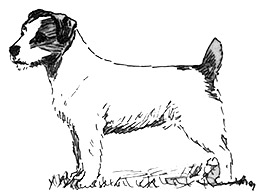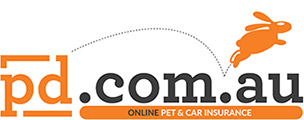Breed standards
Jack Russell Terrier
Breed standards are the official guidelines that describe the ideal characteristics, temperament, and appearance of a breed and ensures that the breed is fit for function with soundness essential.

Australian National Kennel Council 1990
A strong, active, lithe working Terrier of great character with flexible body of medium length. His smart movement matches his keen expression. The coat may be smooth, rough or broken.
A lively, alert and active Terrier with a keen, intelligent expression.
Bold and fearless, friendly but quietly confident.
The skull should be flat and of moderate width gradually decreasing in width to the eyes and tapering to a wide muzzle with very strong jaws. There should be a well defined stop but not over pronounced. The length from the stop to the nose should be slightly shorter than from the stop to the occiput with the cheek muscles well developed. The nose should be black.
Small dark and with keen expression. MUST not be prominent and eyelids should fit closely. The eyelid rims should be pigmented black. Almond shape.
Button or dropped of good texture and great mobility.
Deep wide and powerful jaws with tight-fitting pigmented lips and strong teeth closing to a scissor bite.
Strong and clean allowing head to be carried with poise.
Shoulders well sloped back and not heavily loaded with muscle. Forelegs straight in bone from the elbow to the toes whether viewed from the front or the side and with sufficient length of upper arm to ensure elbows are set under the body with sternum clearly in front of shoulder blades.
Chest deep rather than wide, with good clearance and the brisket located at the height mid-way between the ground and the withers. The body should be proportioned marginally longer than tall, the length from the point of the shoulder to the buttocks slightly greater than the height from the withers to the ground. Back level. Ribs should be well sprung from the spine, flattening on the sides so that the girth behind the elbows can be spanned by two hands - about 40 cms to 43 cms. The loins should be short, strong and deeply muscled.
Strong and muscular, balanced in proportion to the shoulder, hind legs parallel when viewed from behind while in free standing position. Stifles well angulated and hocks low set.
Round, hard, padded, not large, toes moderately arched, turned neither in nor out.
Docked: The tip of the tail should be on the same level as ears. May droop at rest. When moving should be erect.
Undocked: May droop at rest. When moving should be erect.
True, free and springy.
May be smooth, broken or rough. Must be weatherproof, preferably unaltered.
White MUST predominate with black and/or tan markings. The tan markings can be from the lightest tan to the richest tan (chestnut).
Ideal Height: 25 cms (10 ins) to 30 cms (12 ins)
The weight in kg being equivalent of 1 kg to each 5 cms in height, i.e. a 25 cm high dog should weigh approximately 5 kgs and a 30 cm high dog should weigh 6 kgs.
Any departure from the foregoing points should be considered a fault and the seriousness with which the fault should be regarded should be in exact proportion to its degree and its effect upon the health and welfare of the dog. However, the following weaknesses should be particularly penalised:
(a) Lack of true Terrier characteristics
(b) Lack of balance, i.e. over exaggeration of any points
(c) Sluggish or unsound movement
(d) Faulty mouth.
Male animals should have two apparently normal testicles fully descended into the scrotum.



